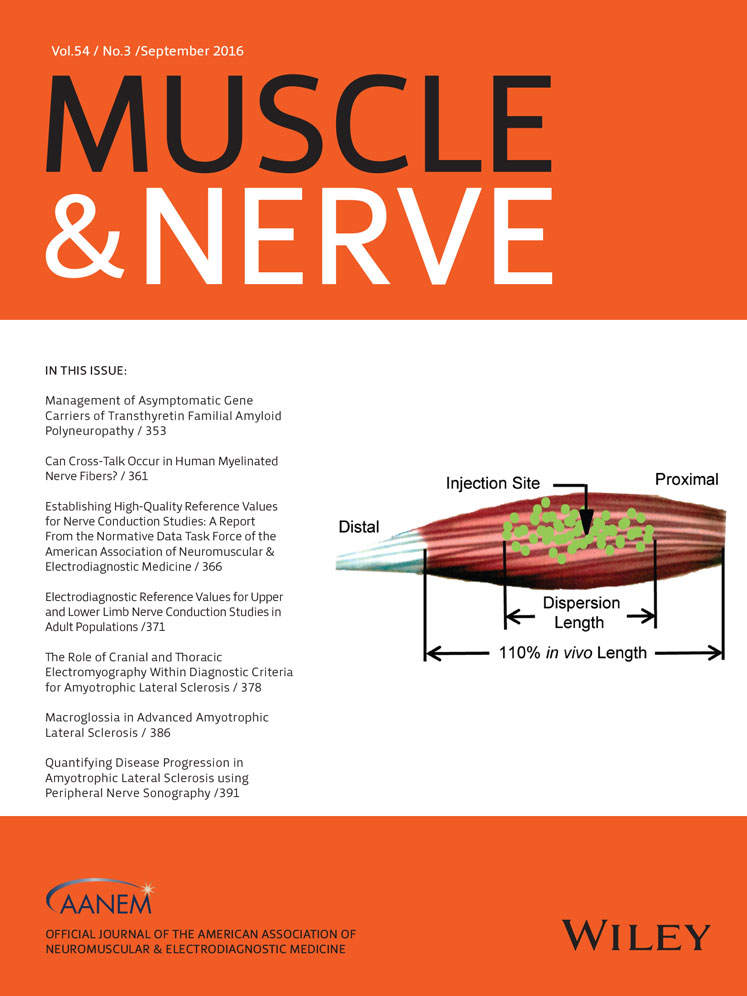Prognosis of severe carpal tunnel syndrome with absent compound muscle action potential
ABSTRACT
Introduction
Opponensplasty is a surgical option for patients with severe carpal tunnel syndrome (CTS). We investigated prognostic factors of patients who lack a preoperative compound muscle action potential (CMAP) of the abductor pollicis brevis (APB) muscle to determine the necessity for single-stage opponensplasty.
Methods
We retrospectively enrolled 22 hands of 22 CTS patients. Prognostic factors considered were age, diabetes mellitus, the median sensory nerve action potential, distal motor latency of the second lumbrical (2L) CMAP (2L-DML), and its amplitude (2L-Amp). Postoperative APB-CMAP amplitude (post APB-Amp) at 12 months was used as the outcome measure.
Results
Only 2L-DML showed a significant correlation with post APB-Amp (r = -0.56). The contribution of 2L-Amp was not significant, although 3 hands with absent 2L-CMAP had a poor electrophysiological recovery.
Conclusions
Prolonged 2L-DML and absent 2L-CMAP seem to be poor prognostic factors. Concurrent opponensplasty may not be necessary in patients with 2L-DML of 8 ms or less. Muscle Nerve 54: 427–431, 2016




